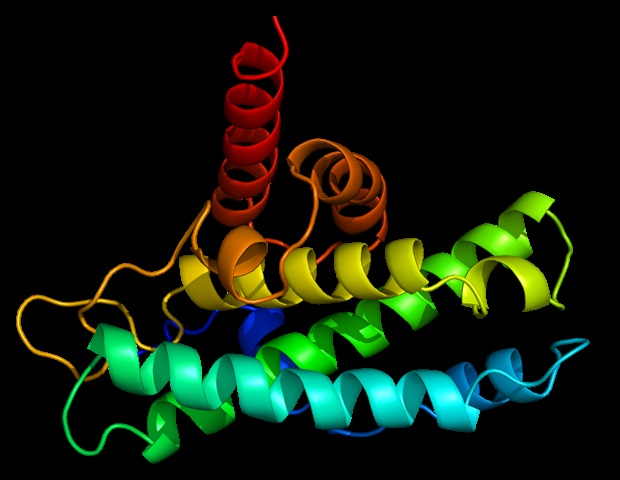In recent years, messenger RNA (mRNA) has emerged as a promising avenue for accurate and potent therapeutic interventions. Unlike DNA drugs, mRNA can express genetic information without the risk of integrating into the host genome. However, challenges in delivery efficiency have spurred the development of advanced technologies such as lipid and polymeric nanoparticles, as well as biomimetic carriers inspired by viral mechanisms. These innovations aim to boost mRNA stability, enhance cellular uptake, and pave the way for safer and more effective therapies.
In a recent review article published on May 7, 2024 in Volume 6 of BioDesign Research , a team of scientists led by Professor Feng Li and Professor Xinying Wang from the University of Chinese Academy of Sciences explored the promising frontier of mRNA therapeutics using protein nanocages (PNCs). Explaining the motivation behind their study, Prof. Li elucidates “Within this landscape of advancing mRNA delivery techniques, PNCs have emerged as pivotal tools. These nanostructures offer several advantages crucial for effective drug delivery. Their customizable surface area and volume enable specific targeting, high cargo capacity, and efficient uptake by cells, addressing key challenges in mRNA therapy.”
Moreover, PNCs protect payloads (drugs they carry) from premature degradation and biological interactions, enhancing their potential for tissue-specific delivery. They are biodegradable in vivo (inside living systems) making them a safer choice. Furthermore, PNCs can be biosynthesized, allowing for streamlined assembly of mRNA-loaded carriers. This versatility positions PNCs at the forefront of developing advanced mRNA delivery systems, promising new possibilities for therapeutic applications.
PNCs encompass a diverse array of nanostructures engineered for various biomedical applications, particularly in mRNA delivery. Derived from both natural and synthetic sources, they offer distinct advantages such as precise cargo encapsulation, enhanced stability, and compatibility with biological systems.
PNCs like MS2, Qβ, and PP7, developed from bacteriophages (viruses that target bacteria), are examples of natural protein assemblies capable of efficiently encapsulating and delivering mRNA. The bacteriophage-derived PNCs require the addition of specific signals on mRNA for efficient packaging. In contrast, plant-virus derived PNCs such as CCMV contain proteins with charged ends that attract mRNA and aid in packaging. On the other hand, nonviral PNCs engineered from bacterial enzymes or designed de novo (from scratch) present innovative solutions for mRNA delivery. These artificial PNCs are tailored through the directed evolution strategy to optimize packaging efficiency and biocompatibility. Despite promising results in vitro, the transition of nonviral PNCs into effective delivery systems for mammalian cells poses challenges in achieving robust intracellular uptake and controlled cargo release.
Effective delivery of mRNA using PNCs encounters significant hurdles that hinder clinical applications. Chief among these challenges is achieving efficient intracellular delivery. PNCs often get trapped within endosomes (cell organelles involved in transportation), hindering the release of mRNA into the cell, limiting therapeutic efficacy. Additionally, PNCs can trigger immune responses in the host, posing risks for repeated dosing and long-term use. Maintaining mRNA stability within PNCs is also challenging, as structural vulnerabilities may permit enzymatic degradation, compromising therapeutic outcomes.
To overcome these barriers, innovative strategies are being pursued. Enhancing endosomal escape mechanisms is one of the key strategies. Surface modifications with pH-sensitive polymers or charged protein units aim to facilitate efficient mRNA release from endosomes into the cytoplasm. Strategies to mitigate immunogenicity involve using biocompatible materials and incorporating self-proteins on PNC surfaces to evade host immune recognition. Nanotechnological advances enable stabilization of mRNA within PNCs, ensuring protection from enzymatic degradation and optimizing cargo loading for sustained mRNA expression.
Emerging technologies and interdisciplinary approaches offer promising avenues to advance PNC-based mRNA carriers. Artificial intelligence (AI) accelerates the design of tailored PNC structures optimized for mRNA delivery, predicting their behavior in biological environments. Directed evolution refines PNC properties, enhancing stability, targeting efficiency, and reducing immunogenicity through iterative optimization. Synthetic biology empowers precise control over PNC assembly and function, facilitating tailored interactions with biological systems. Leveraging nanomedicine innovations further enhances PNC efficacy in personalized medicine.
A hopeful Prof. Wang concludes, “Despite the challenges we face, the convergence of emerging technologies and interdisciplinary efforts holds transformative potential for PNC-based mRNA therapeutics. By overcoming delivery barriers, reducing immunogenicity, stabilizing mRNA, and leveraging advancements in AI, directed evolution, synthetic biology, and nanotechnology, researchers can fully unlock the therapeutic promise of PNCs,”
In summary, continued collaboration and research are essential to converting these innovations into safe, effective treatments, heralding a new era of personalized medicine and improved patient outcomes.
Source:
Journal reference:
Wang, X., et al. (2024). mRNA Delivery Systems Based on Protein Nanocages: How Far Can We Go? Biodesign Research/Biodesign Research. doi.org/10.34133/bdr.0032.


